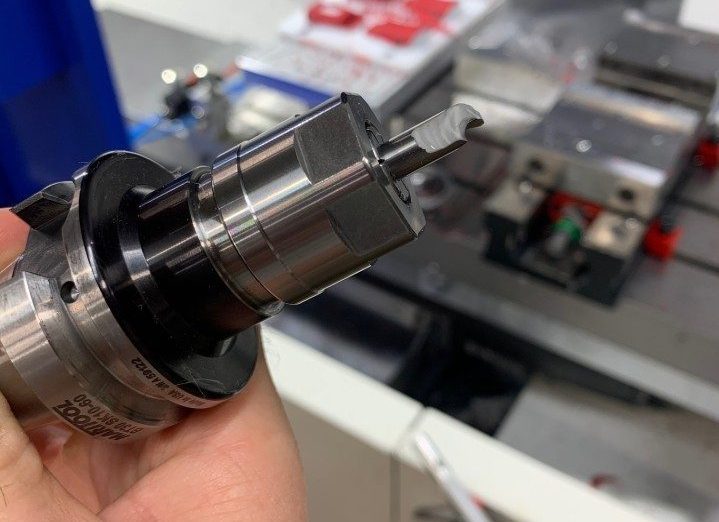
This is Part 1 of a four part series on CNC applications in holster making. I’m starting with the bad news first, and then Part 2 will cover the many benefits that CNC machining can provide to your small business. Part 3 will be about the nuts and bolts of different types of CNC machines, and then Part 4 will cover specific approaches and workflows that we use in our shop, and why we chose them.
Lots of holster makers are using CNC machines for mold making and parts trimming, on equipment ranging from small desktop routers to full size Vertical Machining Centers (VMCs) of the type that you’d find in a general machine shop that did metal work.
There is no one-size-fits-all recommendations for whether or not you should get a CNC machine, or what type of CNC machine you should get, or if you should teach yourself to program, or whatever. I’ve broken down my points by sub topic, and will use the same categories in part two for the benefits list.
CNC Machines
- Small CNC routers are affordable, with many options under $2k. Even so, that can still be a formidable startup cost for a small shop to bear.
- Equipment and tooling can break, and it’s even more likely when you’re inexperienced and teaching yourself how to do things. Be prepared to get your credit card out.
- Fixturing systems also cost money, and most of the good, robust ones can be challenging to mount on a small desktop machine.
- Your programs and fixtures can’t be more accurate than the machine you put them on, so if your machine drops steps, loses its location, or does any of the other weird, hinky stuff that small CNC machines can be prone to… you’re going to have a bad time.
Software & Computer
- There are lots of different CAD/CAM software options out there, and they range from reasonably intuitive to absolutely infuriatingly unbearable.
- For my money, Fusion 360 from Autodesk is by FAR the best package currently available to small shops, but if you have lousy internet service (as I’ve had for a long time) using it can be pretty frustrating due to cloud connectivity issues.
- You’ll need a decently powerful laptop with fast processors and a good graphics card to use CAD/CAM software without hating yourself, so get that credit card out again.
The Learning Curve
- Youtube contains huge amounts of relevant tutorials, especially for Fusion 360, but you’ll still have to dedicate a bunch of time to watch them, try out the lessons they’re describing and then make decisions about how to integrate them into your shop.
- Unless you are an outrageous auto-didact, gaining moderate competence is going to take a lot of time, and this is especially painful if you have pressure from order volumes or lead times.
Flexibility
- When you invest time and money into refining and streamlining a process, you sacrifice some flexibility. If you don’t keep this in mind, you can find yourself trapped in a partially optimized workflow that leaves you stuck.
Files
- Most other shops that have built good mold files won’t sell them, so you’ll probably need to learn to build your own gun models from scratch. To do this, you need to have the guns. Blue guns and other poured molds are not a sufficient base to use for your CAD measurements. That’s right: grab that credit card.
- Shortcuts and hasty/kludgy modeling can give you results that are good enough, until they aren’t anymore. If you don’t take the time to carefully and methodically build your models and LABEL EVERYTHING, you will end up giving back all those time gains later as you struggle through a model update and curse yourself for having left everything in the model tree unlabeled. Trust me, you won’t remember that the critical dimension you need was added into Sketch 72…
Space, Noise and Mess
- Even small desktop routers can be obnoxiously loud. This is fine if you have 5 acres of property and work nights, but can cause real problems if you’re in a neighborhood.
- If shop space is tight, adding a CNC can really restrict your shop flow, and it needs to be set up, carefully leveled, and LEFT ALONE, so you can’t just wheel it back up against the wall whenever you’re not using it.
- They throw chips everywhere if you don’t have a dust shoe and/or an enclosure.
So there’s some of the bad. Tune in next time for the good!
Originally published on May 25, 2021 on LinkedIn







